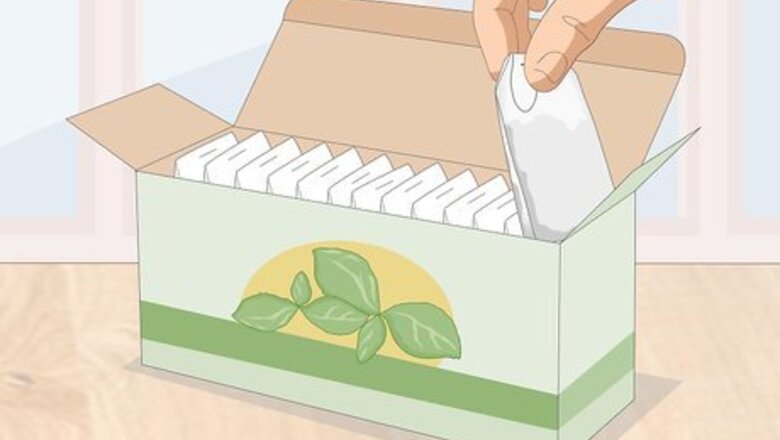
views
Choosing a Storage Container
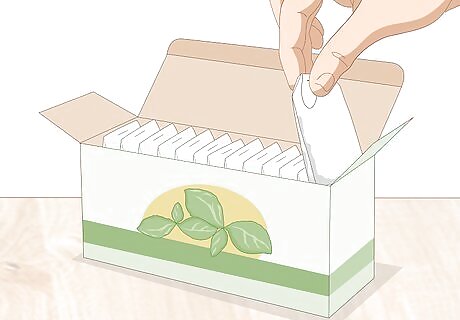
Keep your teabags in their original packaging. Most teas that come in teabags should be kept in the boxes or containers that they came in because these packages are designed to keep the tea fresh. This is especially true if the teabags come in a tin or other container that is relatively airtight. Most commercial teabags come in foil-lined or plastic-lined wrappers that are designed to keep the tea fresh. If the teabags came in a plain cardboard box or paper wrapper, transfer them to an airtight container to keep the tea fresh.
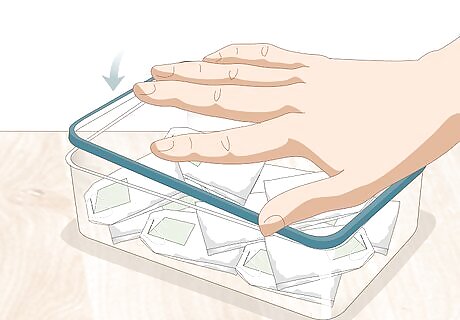
Put loose teabags in an airtight container. If you don't have the box or container that the teabags came in, or if the original packaging is flimsy, transfer the teabags to an airtight container. Glass, metal, ceramic, or plastic containers will all work fine as long as they're airtight! It's best to go with an opaque container, if possible. That way, your tea won't be exposed to light.
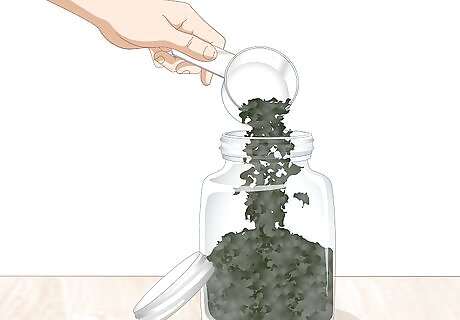
Transfer loose leaf tea to an airtight or vacuum-sealed container. Loose tea leaves should be stored in glass or stainless steel containers that don’t let in moisture or absorb smells. If possible, choose an opaque container, such as a metal tin, so that the tea won't be exposed to light. Clear containers are fine if you plan to store the tea in a completely dark area. The only exception to this is for fermented teas, such as pu'er or pu-erh. Use a breathable container, such as the box it came in, to hold this type of tea.
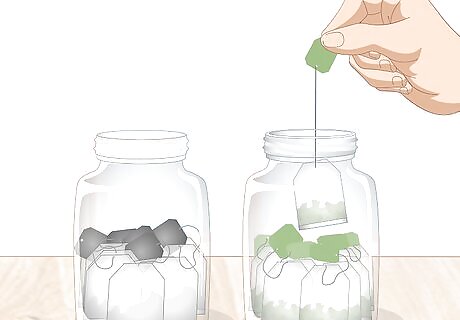
Keep different types of tea in separate containers. Different kinds of tea that are stored together can end up tasting alike or like the stronger scented tea. For this reason it’s best to keep different teas in separate airtight containers. For example, put green tea bags and Earl Grey teabags in separate containers. Otherwise, the delicate green tea may end up tasting more like Earl Grey. Never mix different kinds of loose leaf tea together in the same container.
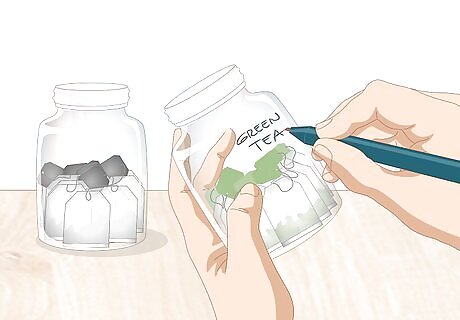
Label your containers to stay organized. This is especially helpful if you're storing several different types of tea! Write the name of the tea on the outside of the container so you don't have to open each container to know what's inside it. It's also a good idea to write the expiration date on the container, which you can find on the tea's original packaging. Opening storage containers repeatedly exposes the tea to oxygen, which will degrade the quality. Clear containers can be useful, since you'll be able to see inside without opening them. However, avoid clear containers unless you plan to store them in a completely dark area.
Selecting a Storage Area
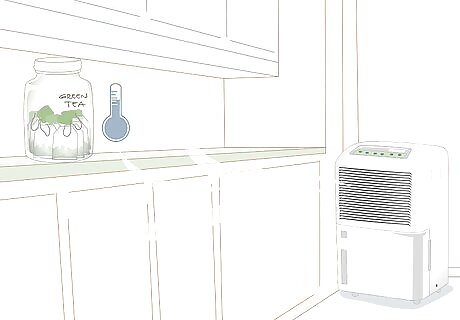
Place the storage container in a cool place. High temperatures and temperature fluctuations can negatively affect the freshness and flavor of tea. Once you've secured the tea in a proper storage container, look for storage spaces that stay consistently cool. It's best to go with a climate controlled storage area that has air conditioning, if possible. For example, if your cupboard is near the oven or your laundry room, it will probably get too warm for tea storage. The area around your dishwasher heats up and gets humid, so don't store tea near it.
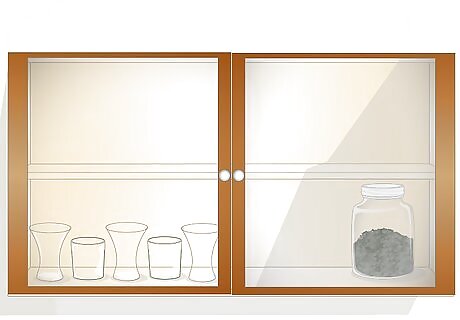
Protect tea from bright light. Tea that is exposed to bright light may end up tasting slightly metallic. Light exposure can also degrade the overall quality of the tea over time, so it's best to choose a dark storage area. This is especially true if the tea inside a clear container, like a glass jar, since it will be exposed to light. For example, avoid countertops where tea could be exposed to direct sunlight. Light exposure can also cause temperature fluctuations, which should be avoided.
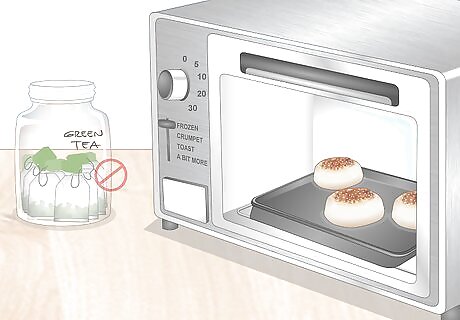
Avoid exposing the tea to moisture. Moisture can seep into and be absorbed by tea, causing it to grow bacteria and perish prematurely. It's important to choose a dry storage location to prevent this. Lots of areas that seem safe in the kitchen might actually be too humid for tea storage. For example, don't store your tea near an oven or stove, since those areas tend to get humid. Avoid counters near the sink, where dishwater splashes, and under the sink, which tends to be damp. Many basements are dark and cool, but they may be too moist for tea storage.
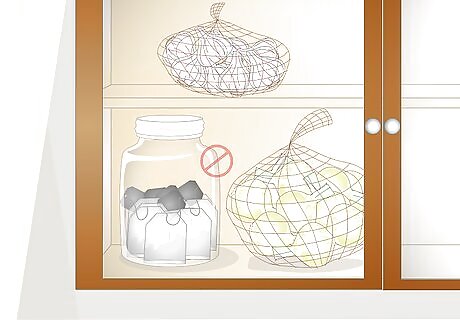
Choose a storage location away from strong smells. If you store tea next to strong smells, such as pungent foods or spices, it can pick up those scents over time. This will change the flavor and be detectable even after you brew the tea. To prevent this, keep tea in a neutral-smelling area, preferably away from other foods. For example, don't store your tea near a spice rack or close to pungent smelling foods like garlic and onions.
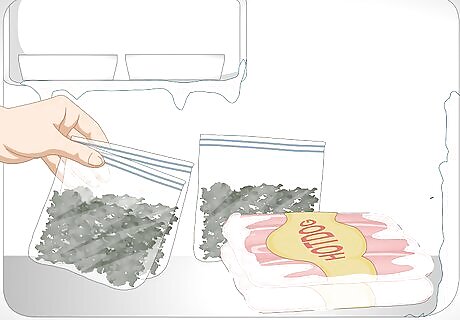
Put loose tea in several airtight containers to store it in the freezer. There's some debate on whether or not tea should be stored in the fridge or freezer at all, since it can easily be introduced to moisture, air, and strong smells there. However, some people feel that cold storage is the best way to maintain the flavor of delicate teas, like green and white tea. If you want to store tea in the freezer, be sure to secure it inside several airtight layers first. For instance, you can put the tea in a sealable plastic freezer bag and then put the bag in an airtight jar or tin. If you have a vacuum sealer, use that to seal your tea before putting it in the freezer.



















Comments
0 comment